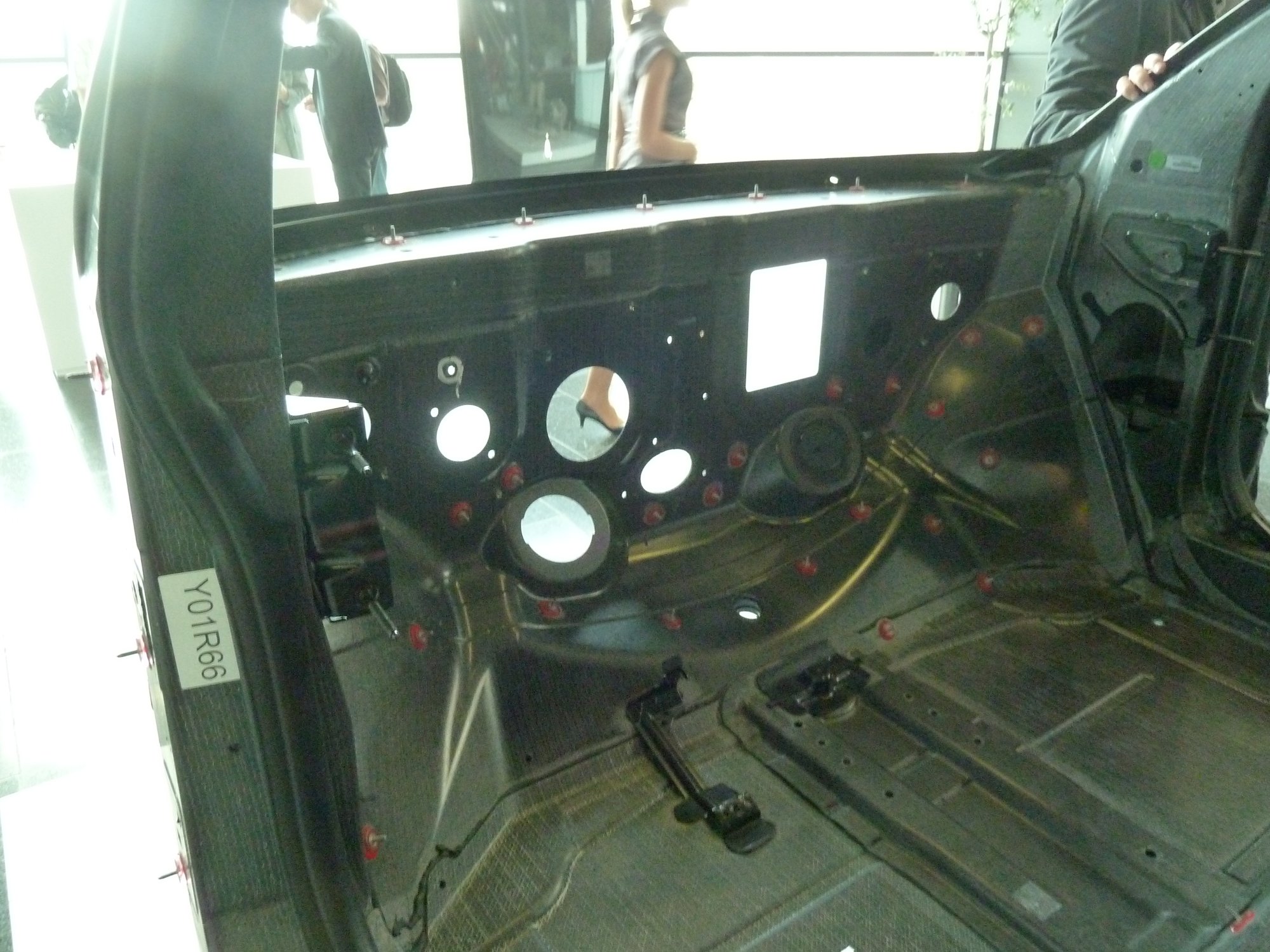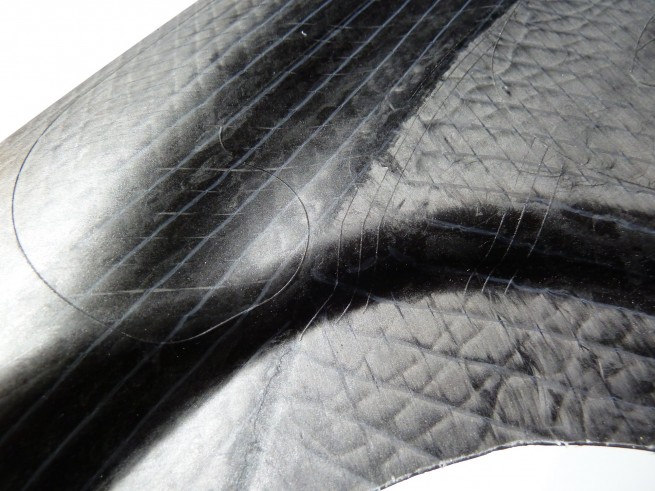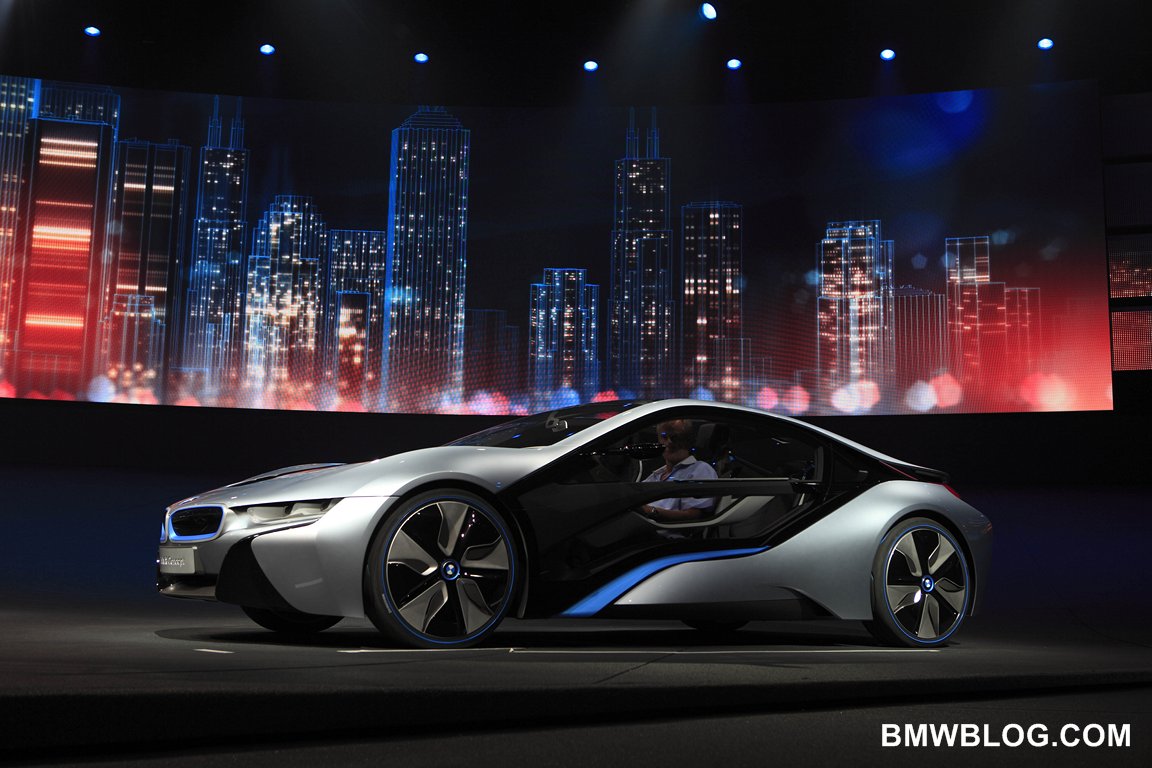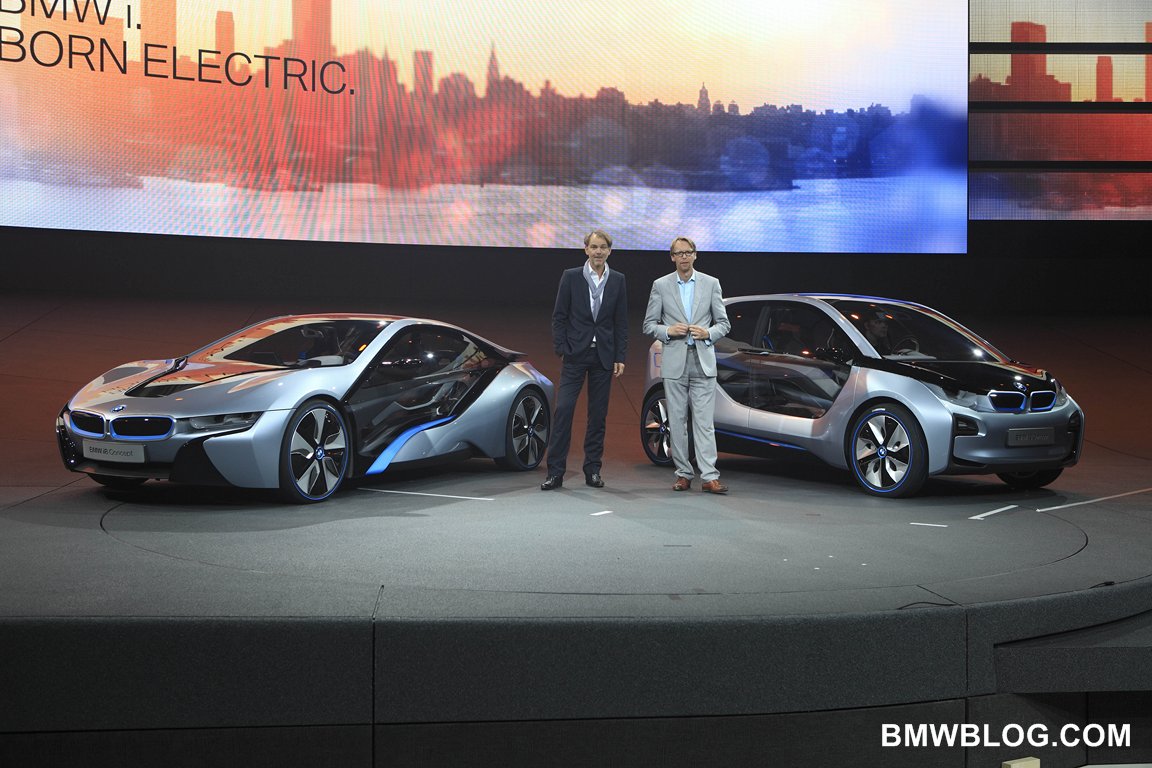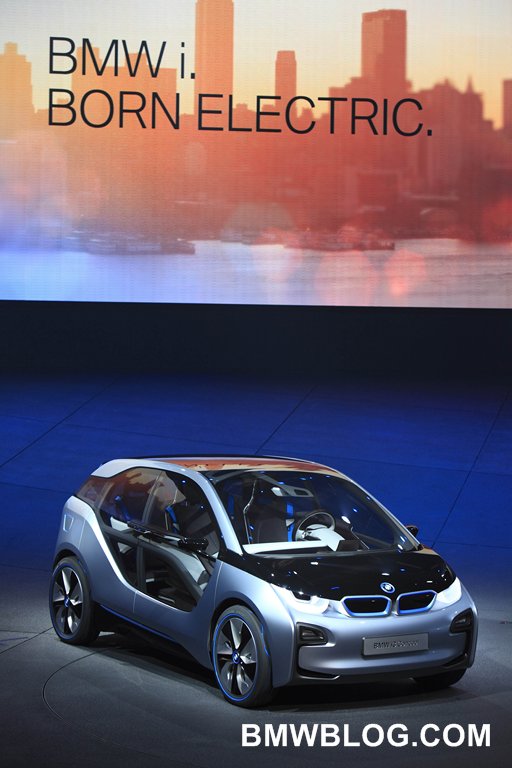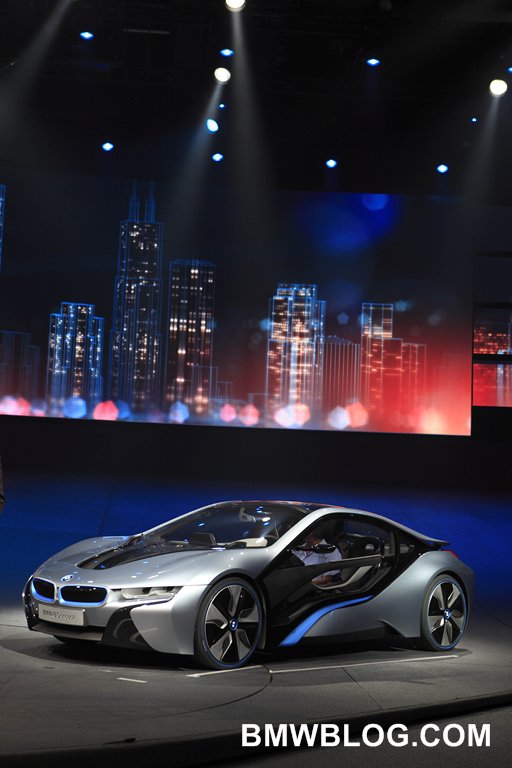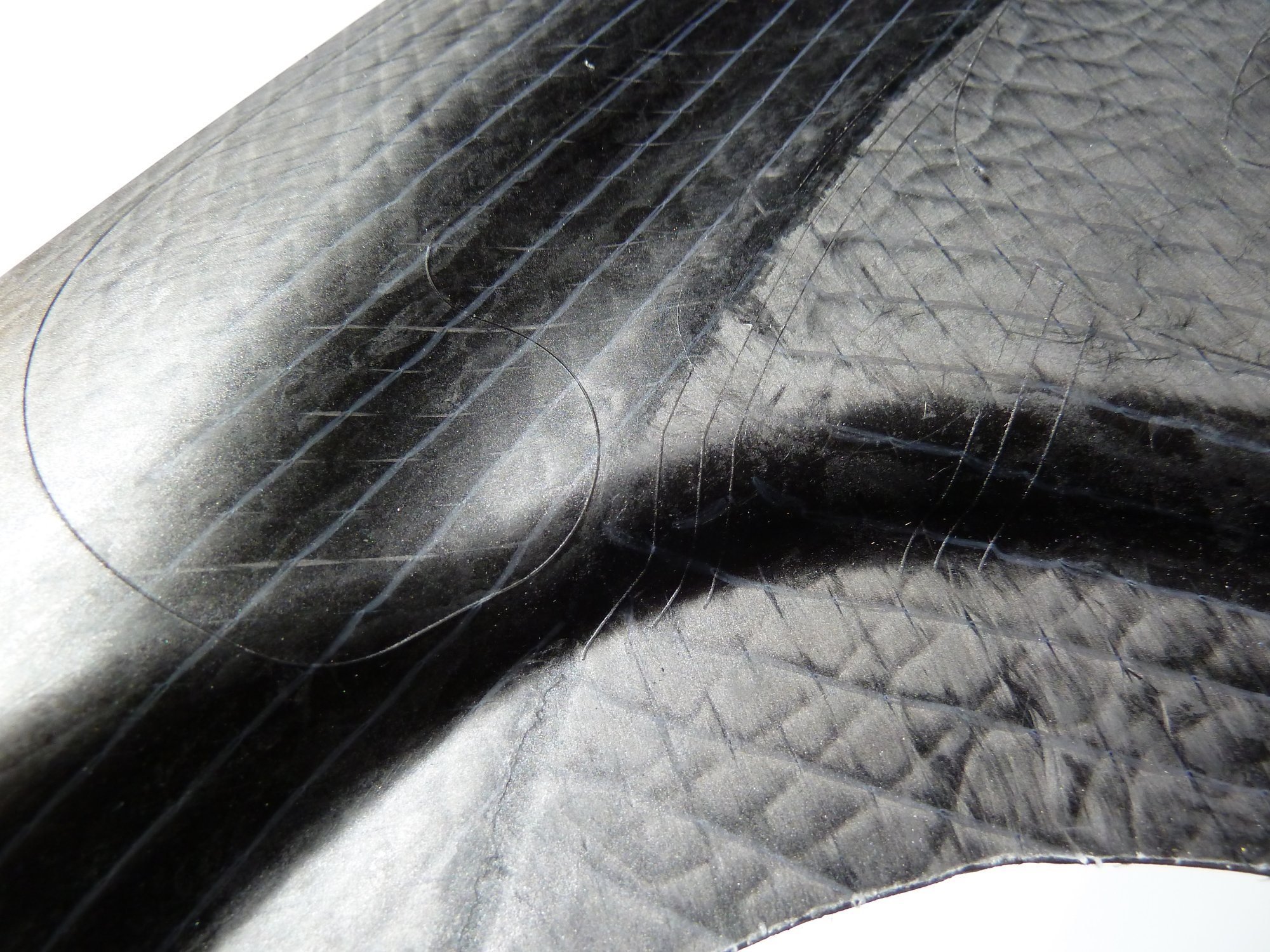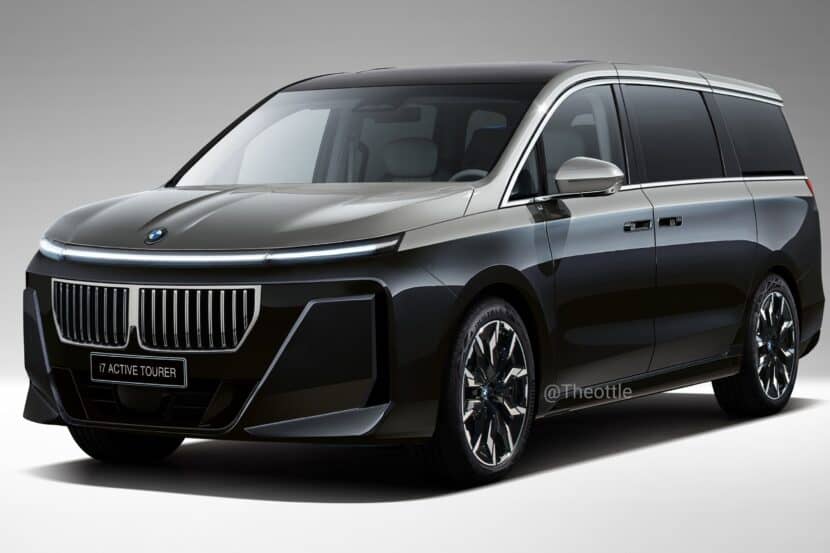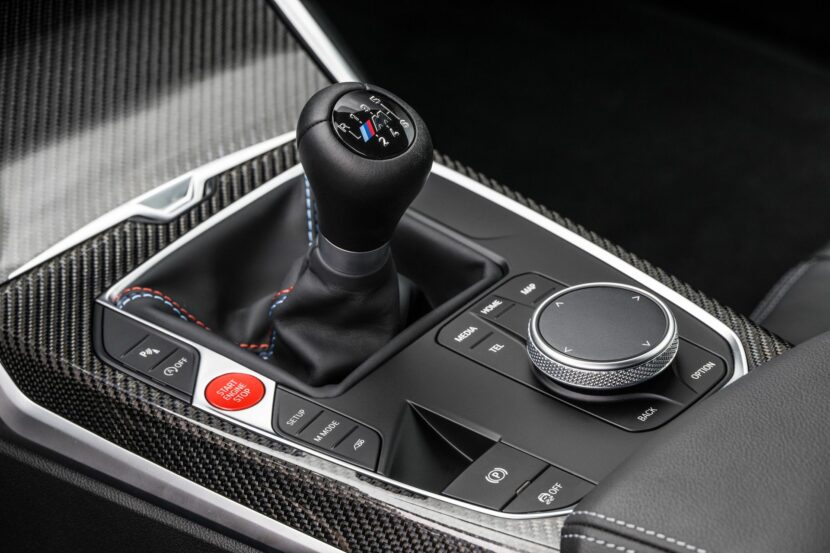Frankfurt am Main, Germany – When discussing electric vehicles it is understood that the enemy to range is weight. Anything that can be done reasonably to reduce vehicle weight has to be investigated, and, if feasible, incorporated into the production of the vehicle. As Colin Chapman would have said, “add lightness”.
The problem with the existing crop of electric cars is that they have been built from reused existing platforms. Their weight is a function of all the bits and pieces needed to support a relatively large engine and heavy multi-speed transmission. Yes, the electric car has a very heavy battery pack, but BMW supports the batteries as low as possible in an aluminum chassis for the i3 and in a central ‘tunnel battery pack’ for the i8 (again as low as can be placed in the chassis).
With a chassis optimized for the drive-train, BMW then optimizes the passenger cell, what they call a ‘life module’, for people and their impedimenta. Further, BMW has decided to build the passenger cell from carbon fiber reinforced plastic (CFRP).
The production process for building structural carbon fiber panels is usually thought of as being labor and time intensive. The process has involved a great deal of handwork and curing time to transition from fabric and resin to finished part. Watching CFRP panels being laid up for formula cars underlies just how time consuming the process is. The sheets of carbon fiber (most often pre-impregnated – known as pre-preg – with resin) have to be laid up in molds, the appropriate layering built up, and custom cutting and fitting for the finished product.
In addition, pre-preg has a shelf life and has to be refrigerated until it’s ready to be formed into panels. The amount of energy required using pre-preg carbon fiber cloth adds to the cost of the final product. However, the use of pre-preg carbon fiber cloth is an industry norm.
The existing production processes are a difficult model to follow if you want to mass produce cars. But BMW has been working on and refining their processes to build CFRP panels since 1991. What they have come up with is a game changer and yet the visualization of the process is quite simple.
BMW has the carbon fiber ‘yarn’ produced in Moses Lake, WA, USA. The ‘skeens’ of carbon fiber are shipped to Germany. There the carbon fiber strands are woven into fabric. The woven carbon fiber sheets then move to on to final processing. The fabric is not injected with epoxy resin until it is ready to be shaped into a panel.
The fabric and epoxy resin come together in a heated die which is then pressed into the required shape. The process of heat and pressure in the ‘stamping’ die cure the material into a lightweight, strong panel.
Inherently they have recreated a trouser press for building the passenger cell. Maybe a better analogy would be they stamp the carbon fiber in a manor similar to some steel that uses one of the exotic high temperature stamping tools. This is exactly the process that BMWBLOG reader ‘JohnJay’ mentioned in a recent comment. [Proving that BMWBLOG
has some very intelligent readers. – Ed.]
The panel spends only a couple of minutes in the press before it’s cured. Using traditional processing techniques, a couple of hours would be required to finish the panel. That is how BMW can mass produce the quantity of panels needed to possibly build 30,000 i3s annually. This process may take more time than stamping an equivalent structure from steel, but not the orders of magnitude difference that traditional carbon fiber production processes require.
One nagging question was how will repairs be undertaken on damaged vehicles. To address that eventuality, BMW presses designated repair points into the panels. They have also been training personnel in the process of removing damaged sections to the appropriate point and gluing replacement parts in place. In fact the separate pressed panels are glued together to form the passenger cell.
Regardless of how simple the process sounds, the devil is in the details. BMWBLOG expects to bring you more information regarding the production process as it becomes available.


